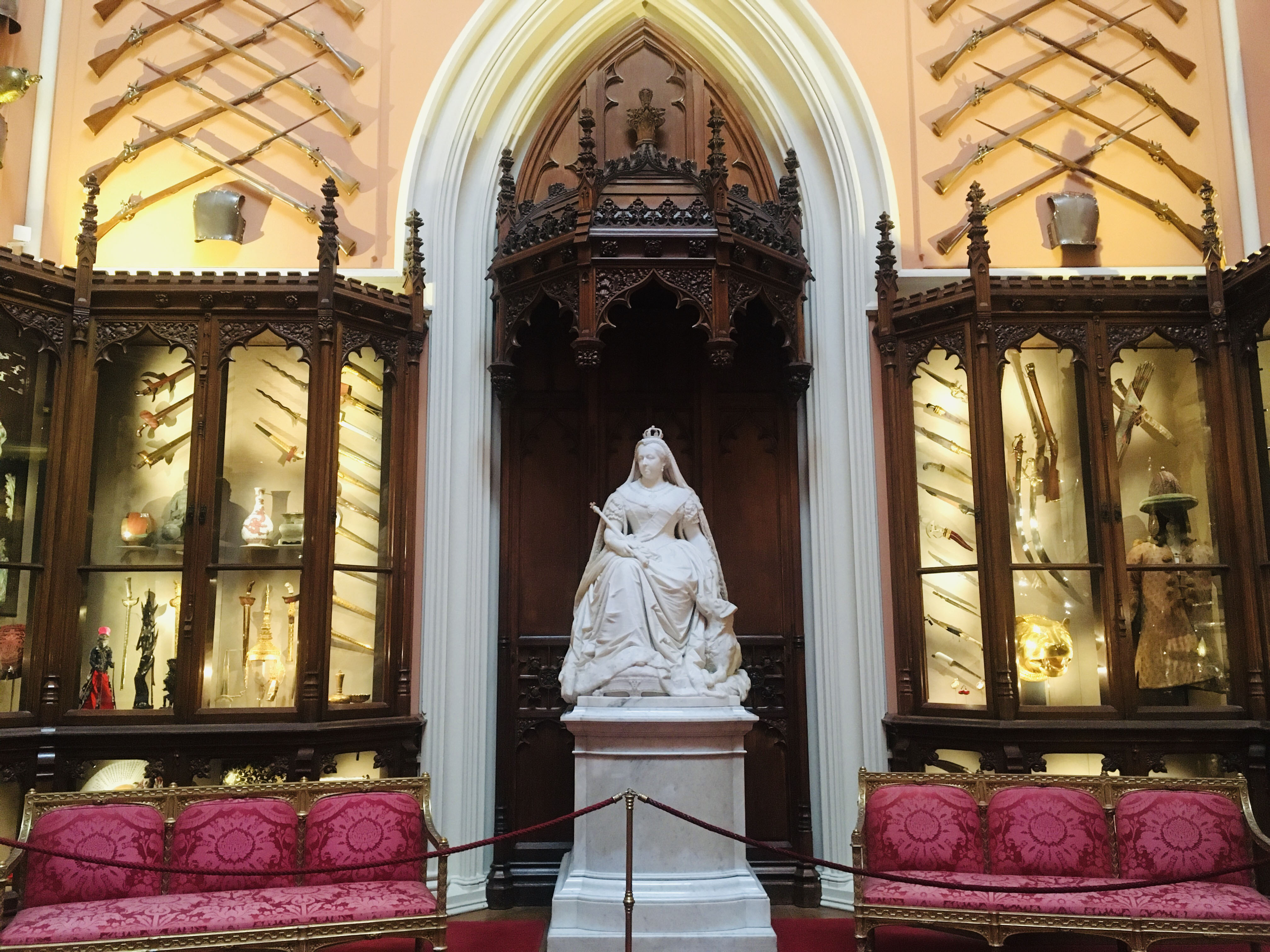
Grand Vestibule: The British Monarchy and the World
The Grand Vestibule at Windsor Castle reflects interaction between the monarchy and the wider world
INDIA
Emerald girdle of Maharaja Sher Singh
c. 1840RCIN 11291
Jewelled belt comprising 18 rectangular gold sections separated by gold links and a buckle; edged with diamond and pearl links. Set with square or hexagonal emeralds and four with engraved oval stones. Buckle has a square emerald between rows of diamonds in a flowerhead design.
On her visit to the Great Exhibition on 22 May 1851, Queen Victoria was particularly struck by the ‘jewels & ornaments from Lahore, [which] are quite magnificent, - such pearls, - & a whole girdle of emeralds’. At the conclusion of the Exhibition the Directors of the East India Company presented the Queen with a splendid selection of these jewels, including a quantity of emeralds, which she described as ‘wonderful and of immense value’. Some were able to be re-cut and set by Garrards in a new emerald and diamond parure, consisting of a tiara, stomacher and a pair of bracelets, which the Queen wore on her State Visit to Paris in 1855. Others, such as the nineteen rectangular or hexagonal emeralds in this girdle, as well as the flat-cut diamonds or lasques set in the borders, were either too thin or were carved, which (to the Queen’s regret) ruled out any re-cutting or reuse.
The girdle, which is of traditional Mughal form, was made for Sher Singh (d. 1843) using emeralds - some of which may be seventeenth-century - that had belonged to his father, Runjit Singh, ‘Lion of the Punjab’. At the time of the Great Exhibition the emeralds, which vary in quality and come either from the Urals or from the Afghan/Kashmir region, were said to have been used by Runjit Singh to decorate his horse harnesses.
The diamonds are either flat-cut (lasques) or more regularly faceted stones cut wither in the West or in India for the Western market. The pearls are porbably eighteenth century or earlier.
Text adapted from Victoria & Albert: Art & Love, London, 2010
On her visit to the Great Exhibition on 22 May 1851, Queen Victoria was particularly struck by the ‘jewels & ornaments from Lahore, [which] are quite magnificent, - such pearls, - & a whole girdle of emeralds’. At the conclusion of the Exhibition the Directors of the East India Company presented the Queen with a splendid selection of these jewels, including a quantity of emeralds, which she described as ‘wonderful and of immense value’. Some were able to be re-cut and set by Garrards in a new emerald and diamond parure, consisting of a tiara, stomacher and a pair of bracelets, which the Queen wore on her State Visit to Paris in 1855. Others, such as the nineteen rectangular or hexagonal emeralds in this girdle, as well as the flat-cut diamonds or lasques set in the borders, were either too thin or were carved, which (to the Queen’s regret) ruled out any re-cutting or reuse.
The girdle, which is of traditional Mughal form, was made for Sher Singh (d. 1843) using emeralds - some of which may be seventeenth-century - that had belonged to his father, Runjit Singh, ‘Lion of the Punjab’. At the time of the Great Exhibition the emeralds, which vary in quality and come either from the Urals or from the Afghan/Kashmir region, were said to have been used by Runjit Singh to decorate his horse harnesses.
The diamonds are either flat-cut (lasques) or more regularly faceted stones cut wither in the West or in India for the Western market. The pearls are porbably eighteenth century or earlier.
Text adapted from Victoria & Albert: Art & Love, London, 2010







